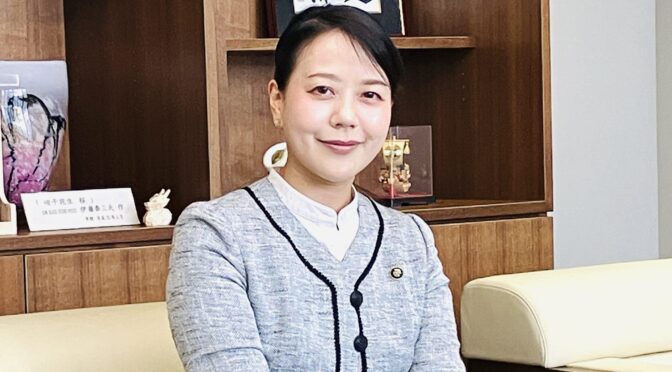- HOME
- >
- PROJECT
- >
- I listened to this person
- >
- New Interview: Mayor Shoko Kawata (City of Yawata)
New Interview: Mayor Shoko Kawata (City of Yawata)
2025.04.01
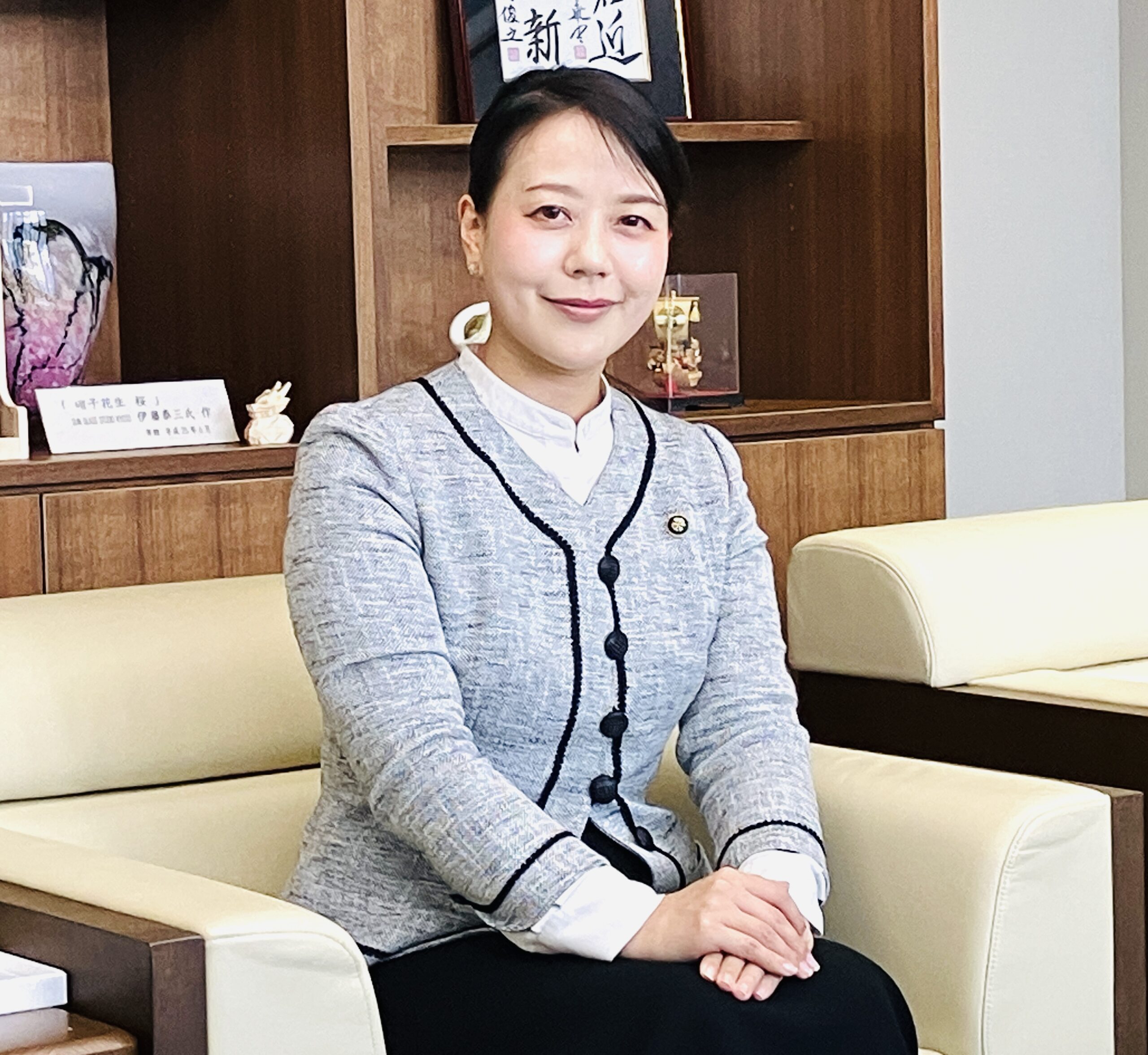
The Institute for the Future of Human Society is currently conducting interviews on social collaboration at Kyoto University and other institutions. For the current interview, we visited Yawata City Hall on January 20th and spoke with Mayor Shoko Kawata, a Kyoto University alumna and former official with the city of Kyoto, about her memories of college, her experiences through her candidacy for mayor of Yawata, and current policies in Yawata.
Enjo Shinko (Interviewer #1): Mayor Kawata, you worked at Kyoto City Hall after graduating from the Faculty of Economics of Kyoto University. We were glad to learn of your ties to Kyoto. Would you tell us about your memories of college and your work with the city of Kyoto?
Mayor Kawata: When I was a student at Kyoto University, I took a room in a condominium in Sakyo Ward and bicycled to the University. I lived near Tadasu no Mori at Shimogawa Shrine, and some days I awoke to the sound of horses’ hoofs during the Yabusame ritual. I enjoyed Shimogawa Shrine’s kemari events in January, Yoshida Shrine’s Setsubun activities in February, the Aoi festival in May, recollecting the spirits of the dead and sending them off with the dai character in flames on the hillside in July, and then the coming autumn season. Experiencing such festivals all year long is an important part of the Kyoto experience. The local community and its spiritual traditions have been passed along from long ago. I was impressed by the way they remain a natural, accepted, and familiar part of community life even today. I loved Kyoto.
I worked for seven years at Kyoto City Hall in three different sections. When I first joined the city, I was assigned to the welfare case workers’ section at Fukakusa in the Fushimi Ward. I worked for two years as a welfare case worker. My experience working on the frontlines with people who truly needed help in that short period proved to be a very valuable personal experience. Generally, many people who receive welfare tend to conceal it. While there are many success stories, there also are many people who do not succeed in their struggle. It was important to be able to see in real life how many people face difficulties despite their hard work, without doing anything wrong or avoiding their responsibilities. I think that experience had a major impact on my later thinking and worldview.
After that, I was transferred to the Finance Bureau where I was in charge of elementary school sites in the Asset Management Promotion Office, putting publicly owned land to use through public-private partnership. Because of falling birth rates and school consolidation, an increasing number of elementary schools are sitting empty. What’s more, the hollowing out of the city center is particularly pronounced in Kyoto where in some cases not just two but three schools were consolidated into one. During my time in this unit, there were more than 20 closed school sites in the city and we needed to consider how to put these sites to effective use. However, the school buildings were not completely unused. Sometimes only one or a few rooms in a vast school would be used by residents as community facilities, and maintenance and renovation costs were growing from year to year. But a school is an important part of the community’s identity about which they care deeply, and making changes to a school can lead to various issues.
At that time, there were also great expectations for inbound tourism due to the Tokyo Olympics. Growing demand for hotels drove a sharp increase in private demand for real estate in the city. Backed by this growing demand, private firms eagerly proposed public-private partnerships to develop facilities that would contribute to their communities. Since the developers would pay rent on land and buildings, the government could secure new community facilities and tourism resources without having to pay for their development. I was in charge of such projects. One example is the site of Rissei Elementary School in Kiyamachi. Kiyamachi-dori is a thriving business district, and the people there are very community conscious. For example, they organize nighttime security patrols and clean up the area along the Takasegawa River. We were concerned about how receptive members of the community would be to the involvement of a developer, but the developer worked hard to earn their acceptance, for example by coming to Kyoto by Shinkansen weekly for about four years to participate in morning river cleanup activities and to get to know local shops. As the result, the current facility on the site was approved and built, which was made possible by renovating part of the old school building and designing a new building consistent with the existing one, all while incorporating the wishes of the local community. I worked on a number of similar projects, and am proud of my work reflecting public-private partnerships and community revitalization into urban development.
Enjo: It’s important to help developers understand how important the site is to the community, isn’t it?
Mayor Kawata: Yes, it is. We held numerous preparatory discussions with residents, developers, and the city. These played a major role in the planning efforts by the city, and the ultimate development was carried out in line with these plans.
Enjo: When did you take an interest in politics, including your current role, Mayor Kawata?
Mayor Kawata: I took a position with the city of Kyoto because I loved the city. When I thought about my future, I wanted to serve society more than make money. My aim was to build a career of identifying and solving social issues. As a student, one of my teachers described policies as prescriptions for society. That made a big impression on me. In our world, we face many questions, such as why things do not go as planned and how we can help people who face difficulties. Among various solutions, I think that policy is one way to improve current systems and structures to achieve solutions. For example, policy can be a prescription for solutions to help people who need it. If any side effects arise, we need to correct them, like a doctor. I think I have wanted to do work like this since I was in high school. That’s why I majored in economics: to learn about social dynamism and motion. Policy work is highly diverse, and I wanted to start by developing and using policy as a local public official in Kyoto, a city of which I am very fond.
In Kyoto, I learned about how interesting basic local government can be and about the importance of local government administration on the frontlines of working with residents. If I had joined, for example, the Ministry of Economy, Trade and Industry, then I would have worked in its area of policy for my entire career. But at a local government, one is transferred every two or three years, which provides the opportunity to participate in welfare, land use, and community development, as I did. Other areas of responsibility include the environmental and sewer and waterworks bureaus, public transit, roads, industry, tourism, and senior welfare. One might be assigned to any of these areas in the next year. This helps to develop the habit of looking at things from the point of view of residents’ lifestyles and to get a feel for the scale and importance of the roles played by local government. It proved an excellent experience for me.
Enjo: Was it this experience that led you to run for mayor?
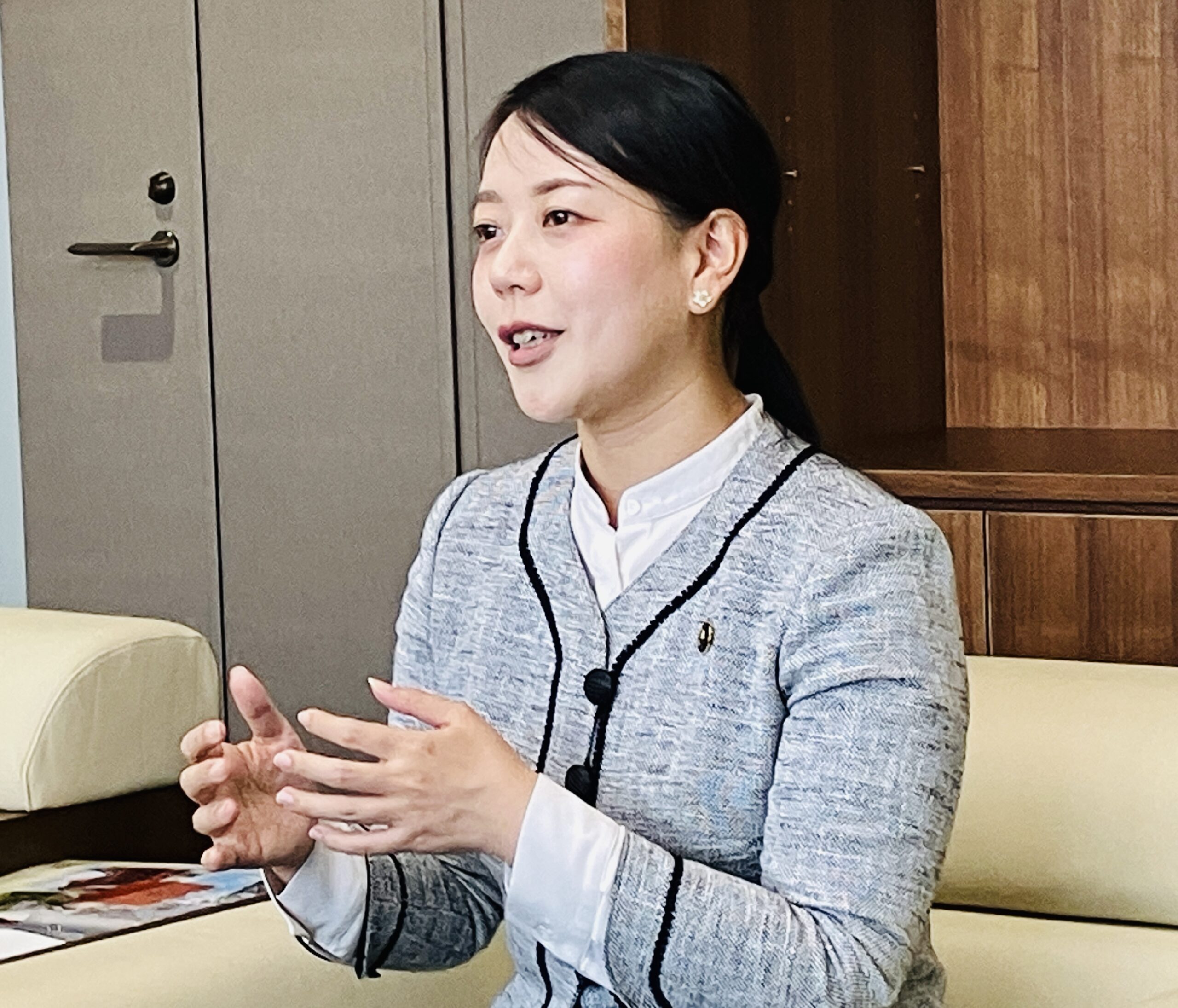
Mayor Kawata: Yes, it was. I was inspired by the potential and the importance of the many roles that local governments play in residents’ lives. While I was satisfied with my work with the city of Kyoto, I began to look for a position in which I could think about society from multiple perspectives, bringing together various fields. At that time, I learned from a fellow alumnus about how Shin Tsuchida (now a member of the House of Representatives for Tokyo’s 13th district), who graduated from the Kyoto University Faculty of Economics in the same year I did, had become the youngest person ever to run for parliament for the Liberal Democratic Party in 2021. Although we had not known each other as students, he and I had mutual acquaintances, such as junior classmates from our seminars, and one of them who knew of my interest in policy introduced me to Mr. Tsuchida. I met him during the election. That was my first experience seeing a Tokyo election up close. He told me that he would not necessarily recommend the world of politics because there were no clear career paths, but if I were truly interested I should consider working under Akiko Santo, a member of the House of Councilors for whom he had served as secretary.
While I had long been interested in national policy, it seemed to me that unless I experienced it up close I would not be able to understand what was happening at the core of the national government, how it made decisions, and what kinds of mechanisms were at work in the background. Seeing this as a once-in-a-lifetime opportunity, I took the bold step of leaving Kyoto City Hall to become a private secretary at Akiko Santo’s office in Nagatacho, Tokyo.
Prof. Seiji Kumagai (Interviewer #2): It’s interesting that you were a secretary for a member of the House of Councilors before becoming mayor of Yawata. Was this an opportunity that came up through an acquaintance?
Mayor Kawata: Yes, it was. My university ties proved important. My connection had always worked in important roles: Right now, he is a parliamentary secretary in the Ministry of Finance, and before that he was a parliamentary secretary in the Digital Agency. He has always played an active role at the center of politics, and I think he may be one of the most active of the young politicians at the moment.
Kumagai: So, you majored in economics because you had been interested in policy and social reforms since high school. You could have learned about politics in the faculty of law as well. Why did you go from economics to policy?
Mayor Kawata: When I was in high school, I considered law to be a static discipline based on precedent that required sticking strictly to established frameworks, whereas economics seemed more dynamic to me. For example, an economic analysis of current events could enable us to consider dynamically how the election of Donald Trump as US president would affect the stock market. I chose economics because as a person I enjoyed looking at dynamics and thinking about what was behind them.
But after observing some of my outstanding senior colleagues while working for the city, I saw how important law is, too. For example, law can enable us to find the appropriate legal systems for the issues we want to address. Those who understand the law can quickly understand interpretations and methods, along with clear demarcations and limits. Without that knowledge, it can be difficult to address issues because they seem so daunting. Today, I see knowledge of the law as an important guide for taking the first steps forward towards a vision of the future.
Kumagai: That’s very interesting. Clearly a dynamic approach is essential to a mayor in having an impact on city policy together with city officials.
Enjo: You are focusing on such areas as free healthcare and support for raising children. What kinds of solutions would you like to implement in the future?
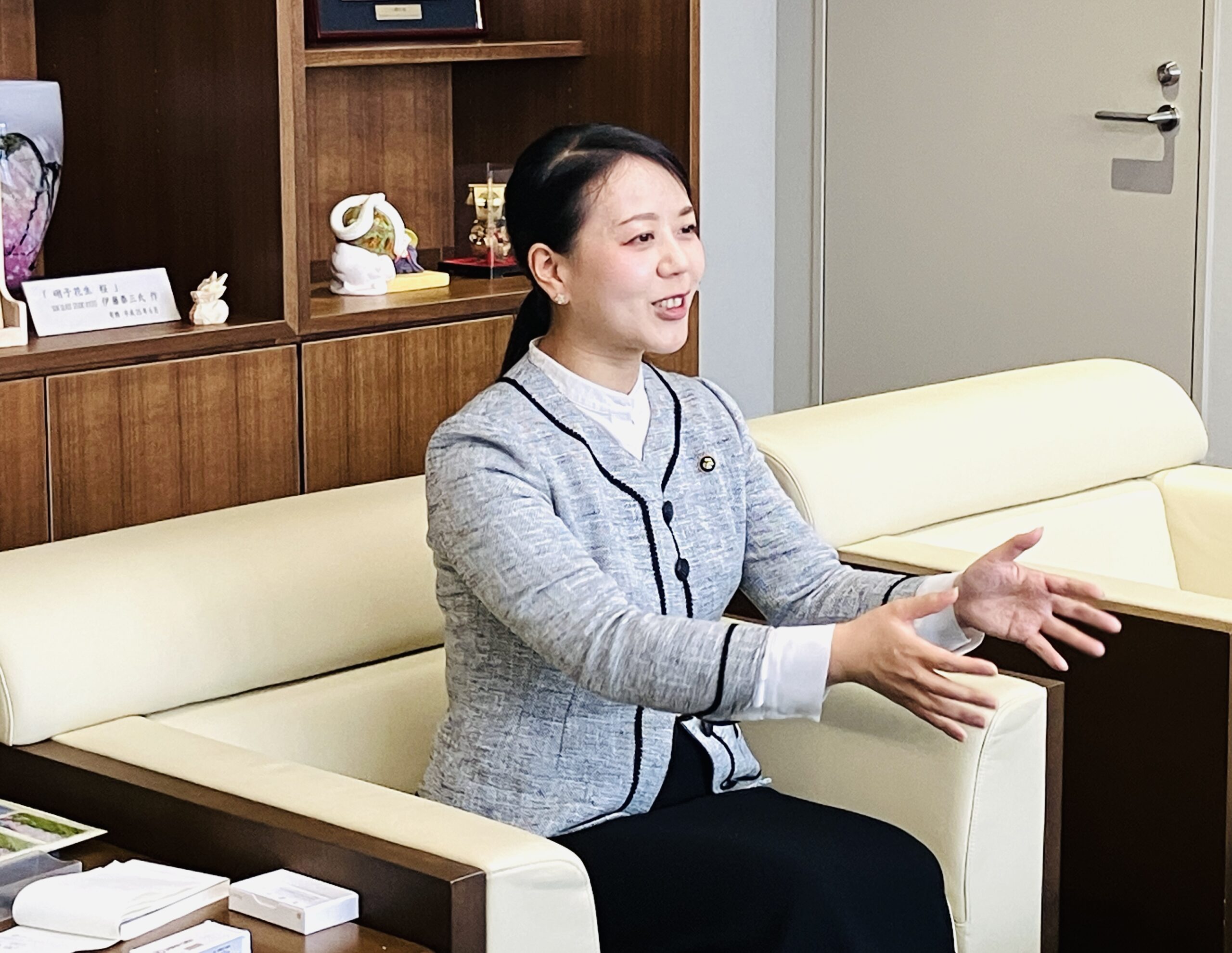
Mayor Kawata: We are considering two main initiatives right now in Yawata. The first is urban development: Yawata is home to numerous tourism resources, including national treasures and historical and cultural heritage sites, such as Iwashimizu Hachimangu Shrine as well as the Shokado Garden and the 1.4-km cherry blossom tunnel at Sewaritei. However, it is concerning that these sites are not contributing substantially to economic consumption in the city.Despite all of these wonderful sites, the average consumption by tourists visiting Yawata is only about 300 yen per person. There are few spots for lodging, dining, and shopping for souvenirs, and thus few opportunities for consumption in the city. We want to communicate the attractions of Yawata, so that people interested in the city will have a positive impression of it. If we fail to do so, then these attractions will not be able to contribute to the community economy. For these reasons, we believe that at this stage we need to develop the city and establish convenient tourism routes. Toward this end, we are considering broadening the tangible and intangible bases of vitality and convenience for the community and residents to establish a cycle linking tourism and economic activity, over a timespan of one or two decades. In fact, this fiscal year, we will establish a budget for sharing a grand vision of the culture with all residents.
The second main initiative is support for childrearing. In today’s society of low birth rates and an aging population, we need to make the community a safe, convenient place to raise children. Although opinion is divided on this subject, since taking office I have worked to provide free healthcare for children and to move towards free school lunches, starting by having local government cover 25% of the cost. There is no hope for a solution to low birth rates and the aging population without making a society in which people will want to have their second and third children, by alleviating the economic, emotional, and time burden of childrearing as much as possible. I believe that these are efforts that we as administrators on the frontlines of local government should work for in close contact with residents.
Kumagai: I walked here from the train station today. It was a pleasant walk on the route to Iwashimizu Hachimangu Shrine. When I looked for a place to eat lunch, however, I had to settle for buying something from a convenience store at a price of around 290 yen. It really does seem like a missed opportunity. As you prepare the community’s grand vision, are you considering enlisting the cooperation of academics and other experts?
Mayor Kawata: Since the current work on the grand vision includes studying such matters as tourism demand, we also have subcontracted research to a consulting firm. But instead of relying on the consulting company for everything, we also are holding roundtable discussions with internal experts and meetings to exchange opinions with city planning and tourism development experts, considering their comments in our plans. The grand vision is still in the formative stage and we would like to cooperate with even more people as we move forward for the development of the community in which many people are active stakeholders.
Enjo: Kyoto has involved students from art colleges in the development of shopping districts and private libraries. Are you considering any such cooperation with universities in the future?
Mayor Kawata: Inevitably city staff alone will be insufficient to proceed with urban development, and private consultants will play important roles. Relying solely on consulting companies will also increase costs. We would like, for example, to have students use Yawata in fieldwork and other activities and work together with us to find solutions for projects such as community revitalization, based on objective analysis and the consideration of diverse aspects such as the dynamics in the demand for transport.
Kumagai: The speed with which consultants can work is very gratifying. But at the same time, their services are costly. Certainly students are a good choice for time-consuming work on the ground, such as demand analysis and reviewing transport dynamics.
Mayor Kawata: Yawata’s population peaked in 1995 at 76,000, and since then it has decreased gradually to about 68,900 today. When the city was striving toward its announced aim of increasing the population to 100,000, it built large-scale public facilities suited to such a population. Today, as many of those facilities are reaching a stage at which they require maintenance, we need to focus on the truly essential facilities. It would be costly to contract this study and analysis to a consulting company. There is no end to the list of topics we would like to have consulting companies address, such as community bus rerouting.
Kumagai: An advantage of universities and research institutions is their ability to research topics in depth. A disadvantage is the difficulty of achieving outputs in a short timeframe because they tend to focus on scientific accuracy. At the same time, sometimes students need to generate outputs, such as graduation theses in shorter periods of time. I think that they might be able to conduct some research fairly quickly if the city cooperates by identifying the most important topics and providing existing data. It is important to use students where appropriate, instead of relying solely on consulting companies.
Mayor Kawata: Both are necessary. The other day, I spoke with people from Kyoto Prefectural University who expressed an understanding of administrative needs and wanted to talk about how they could cooperate. When we think about urban development and community resources unique to Yawata, inevitably the subject of Iwashimizu Hachimangu Shrine will come up. I think it has a highly unique legacy in the community, both culturally and spiritually. I would like us to consider the topic of how we can link the shrine and the town together well.
Iwashimizu Hachimangu Shrine is a leader in Shinto-Buddhist syncretism. Originally, there were numerous temples on the mountainside, known as the Otokoyama Shijuhachibo. The anti-Buddhist movement in the Meiji era removed only the temples. Today it is a shrine to Hachiman, the guardian deity of Japan and the Imperial Household, but in the old days, it was important in Buddhism as well as a temple to the Great Bodhisattva. Hachimangu was at the top, but there were numerous Buddhist facilities by its side, including large temples, octagonal halls, and statues of the Buddha. The Shinto that prevails today in Japan is a post-Meiji Shinto. Traditional Shinto was a folk religion that came to be in Japanese people’s lives. It was a polytheistic belief system based on the worship of nature, a syncretic fusion of Shintoism and Buddhism. Esteemed by the Imperial Household, Iwashimizu Hachimangu Shrine is still a very important shrine today, as well as being home to the syncretic spiritual legacy of Japan’s past. I would like for us to develop our community in ways that will help people to learn more about this important history.
Enjo: Syncretism goes along well with the current movement toward diversity.
Mayor Kawata: While today the concept of diversity is something of a reverse import from the West, I think that Japanese people have respected diversity since ancient times. Also, Iwashimizu Hachimangu Shrine’s Gokokuji Temple was home to all 12 guardian gods, but during the anti-Buddhist movement of the Meiji era, all 12 guardian gods were moved to Awaji Island where they still reside today. I would like to express this history clearly.
Kumagai: That’s very interesting. While it might be difficult to reproduce its past state physically, perhaps you could do so by fusing a digital space with the facility.
Mayor Kawata: In fact, we are counting on Dr. Takeshi Kato from the Hitachi Kyoto University Laboratory and Dr. Yoshinori Hiroi from the Institute for the Future of Human Society for a model to reproduce the Kanunken open-air teahouse on the side of Mt. Otokoyama at Iwashimizu Hachimangu Shrine. We would like to inspire civic pride to attract tourists by publicizing these cultural legacies of which even many Yawata residents are unaware.
Kumagai: People who live in the community might tend to take such sites for granted without seeing their value.
Mayor Kawata: When we talk about promoting tourism or building hotels, locals wonder why anybody would want to stay in Yawata, but I’m sure there are many people who would like to visit.
Kumagai: I travel back and forth between Tokyo, Kyoto, and Hiroshima. Since each of these is a major urban center, it gets very tiring. I feel comfortable in Yawata, where the abundant natural surroundings have a kind of detoxing effect. It contributes to well-being. I’m sure that people would want to stay in a lodging facility in such a place. Another issue is transport access. If routes were secured, then I think the city could prove very popular.
Mayor Kawata: While it’s not far from major cities, Yawata is a relaxing place rich in nature. For example, the way from the station in the cable car to the summit offers views of the deep gorge crossed by an iron bridge. It’s a beautiful sight. This ability to reach a deep ravine just a short walk from the station is one of the city’s attractions.
Kumagai: It sounds like an advertising slogan: “Just five minutes from the station to the gorge.”
Mayor Kawata: In a similar way, Todoroki Gorge in Setagaya, Tokyo, has become well known as a place close to nature even though it’s in the city center. Earlier I mentioned the cherry blossom tunnel at Sewaritei. This is a site where three major rivers—the Katsuragawa, Ujigawa, and Kizugawa—flow into the Yodogawa River. It’s a rare spot of wide-open terrain with a distinctive landscape. Recently a boat transport project has been launched to run a from Sewaritei up the Ujigawa River to Chushojima Island in Fushimi. I took part in a special trip on the shaded pleasure boat and traveling on the river in a shaded boat creates a special kind of atmosphere. The river breeze is refreshing and balmy. It’s like relaxing on a veranda in the early afternoon. I think there would be demand for such a cruise from not only tourists but also local residents who want to spend an hour or two relaxing in nature on a nice day.
Kumagai: It might be a good idea to show a video of the gorge and the boat. Lodging costs in Kyoto and Tokyo have skyrocketed recently, and I would imagine that more people would consider visiting Yawata, which combines natural beauty with affordable prices and delicious foods, if they learned more about its sightseeing resources.
Mayor Kawata: It’s also very important to let people in the city know about demand for tourism in Yawata from outside the area. We tend to take our own community for granted and not notice its appeal.
Enjo: I have one final question. Recently, members of the younger generation, such as you, Mayor Kawata, Mayor Takashima of Ashiya, and Mr. Tsuchida mentioned earlier, have been elected mayors and members of parliament. What do you consider to be the significance of these accomplishments by the younger generation, including yourself?
Mayor Kawata: Since the time of the election, voters have seemed to have high expectations for the younger generation to have the power to effect change. While this can be very challenging, it is challenging in a positive way. To change things in a better direction, it is essential to have the strength and determination to keep listening to the views of many residents and other stakeholders and to keep talking to them without flinching. This requires both mental and physical power. If steady progress powered by wisdom, knowledge, and experience is a characteristic of veteran politicians, then the ability to take on challenges head-on is a strong point of younger politicians. Each of these strengths is essential. When you want to change something or make the community a better place, it is vital to have powerful people on your side. I continually try to live up to these high expectations.
Kumagai: I got a sense for the high level of expectations earlier at the reception counter. A senior citizen at the next table, who appeared to be a retiree from Kyoto City Hall, told the reception staff how he had great expectations for you as mayor.
Enjo: City hall has a very bright and welcoming atmosphere. Each floor is spacious and well organized. Is this also one of your priorities?
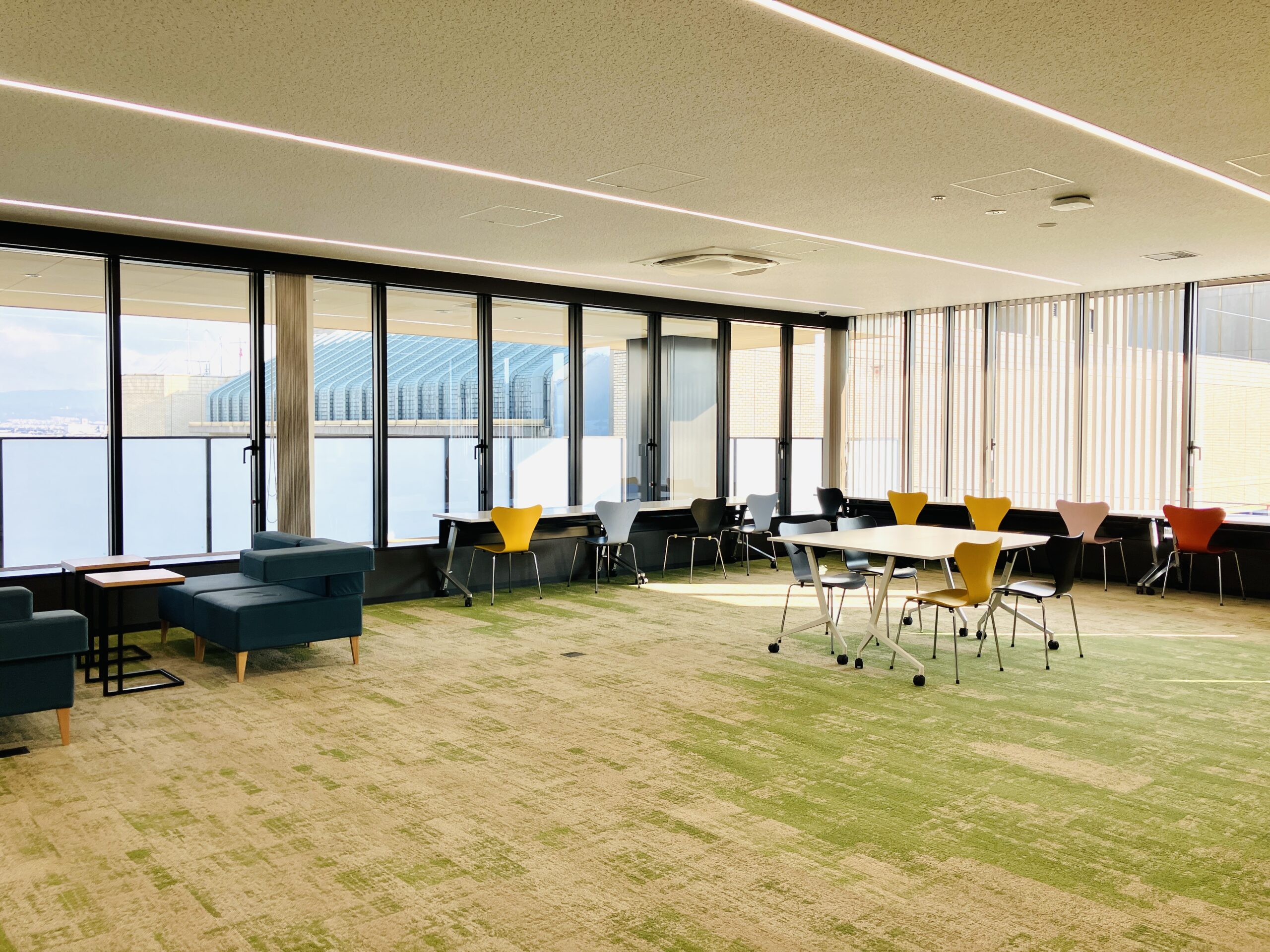
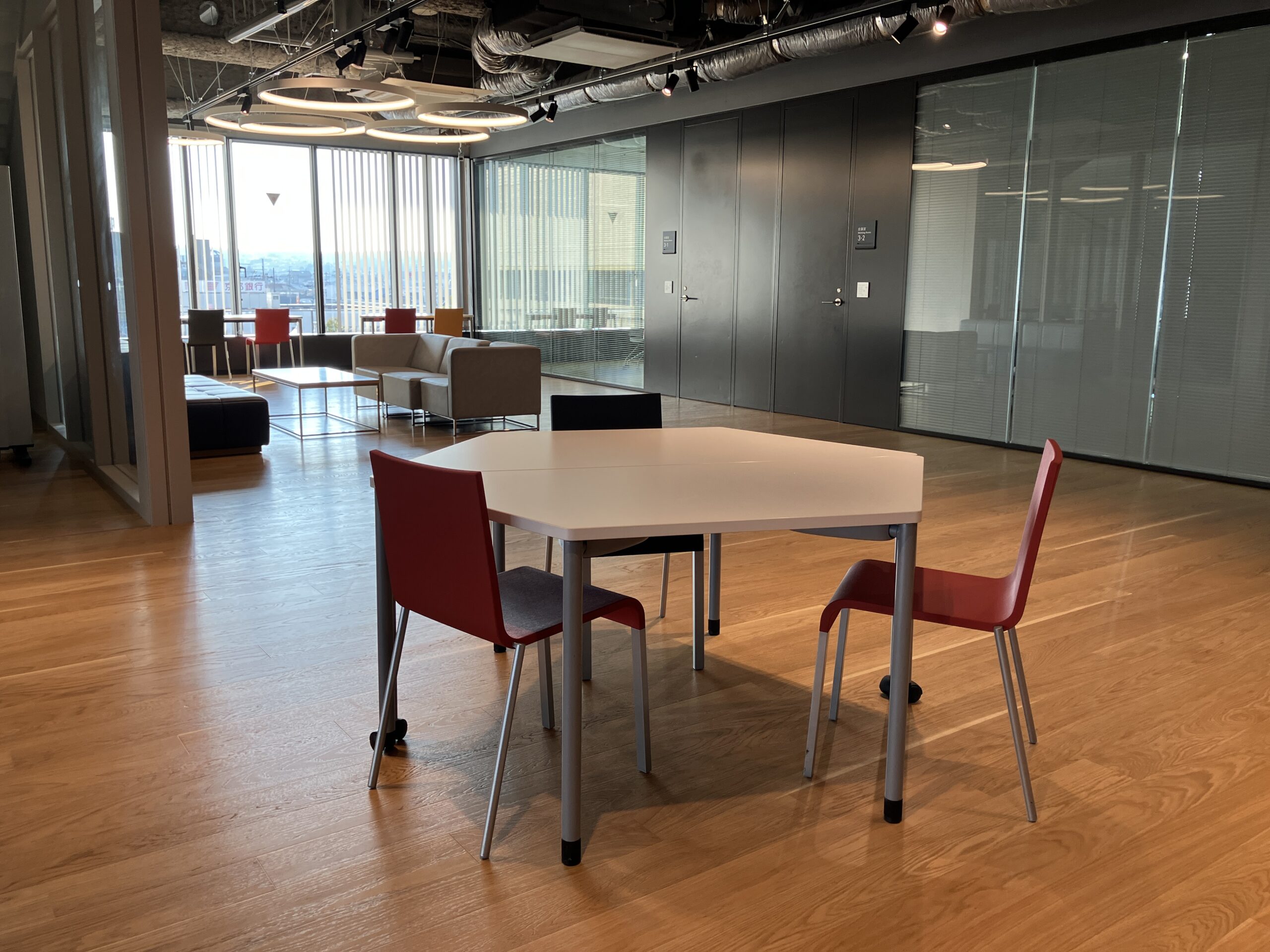
Mayor Kawata: I took office as mayor at the same time we moved into the new city hall. The free space for residents features stylish tables, chairs, and sofas so that it does not feel like a government office, along with artificial turf on the floor for relaxing. This gives it an atmosphere like a cafe that residents can use freely. Until now, city hall has been seen as a place for getting documents and completing procedures, but I think that with the introduction of individual number cards and other advances, these roles will become less important as digital technologies make administration more efficient. Instead, I would like city hall to be a familiar place with a sense of community where residents might want to come when they have some time to spare.
Kumagai: That’s a refreshing and forward-looking idea. It seems that children who have no particular place to go are coming here too.
Mayor Kawata: Children come here after school because it is so comfortable. It’s even started to attract crowds of somewhat mischievous middle-school students on their way home from school (laughs). They can sit on the sofa and chat with friends, and it doesn’t cost them anything. During summer vacation, many children come here to do homework or play, although we have to caution young children about skateboarding around too fast (laughs). People are quick to find attractive, comfortable spots. We plan to develop a plaza next, as even more of a place where anybody can come as they like.
Kumagai: We look forward to your future accomplishments.
Mayor Kawata: Thank you very much.
(Interview by Prof. Seiji Kumagai and Shinko Enjo. Written and photographed by Shinko Enjo. Layout and editing by Prof. Yoshinori Hiroi and Prof. Seiji Kumagai.)


